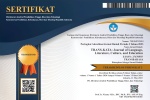Translation as Rewriting in the Rendering of Classical Chinese Poetry: Pound’s Cathay
DOI:
https://doi.org/10.54923/jllce.v2i2.37Keywords:
Cathay, Chinese poetry, Ezra pound, rewriting, translationAbstract
The concept of translation as a form of rewriting, developed by André Lefevere, identifies translation as a textual adaptation based on a series of social and cultural factors. Therefore, the act of translating means rewriting a foreign text on the basis of local cultural and poetic norms. The purpose of this article is to apply the concept of rewriting in translation to the approach employed by Ezra Pound in his collection Cathay (1915), which has been chosen as a model to conceptualize the writer’s approach to the translation of Chinese texts. The first section of this article will focus on the different approaches employed in the translation of classical Chinese poems. Following a brief historical overview, two diametrically opposed translation methods developed at the turn of the 20th century, namely the Victorian method and Pound’s method, will be compared. The investigation on Pound’s translation methodology will be then discussed through the analysis of some of the poems included in Cathay. The findings of such analysis will allow for a deeper understanding of Pound’s method, and finally identify to what extent Pound translations (or rewritings) succeeded in painting a clear and unbiased picture of Chinese culture for his Western readers.





